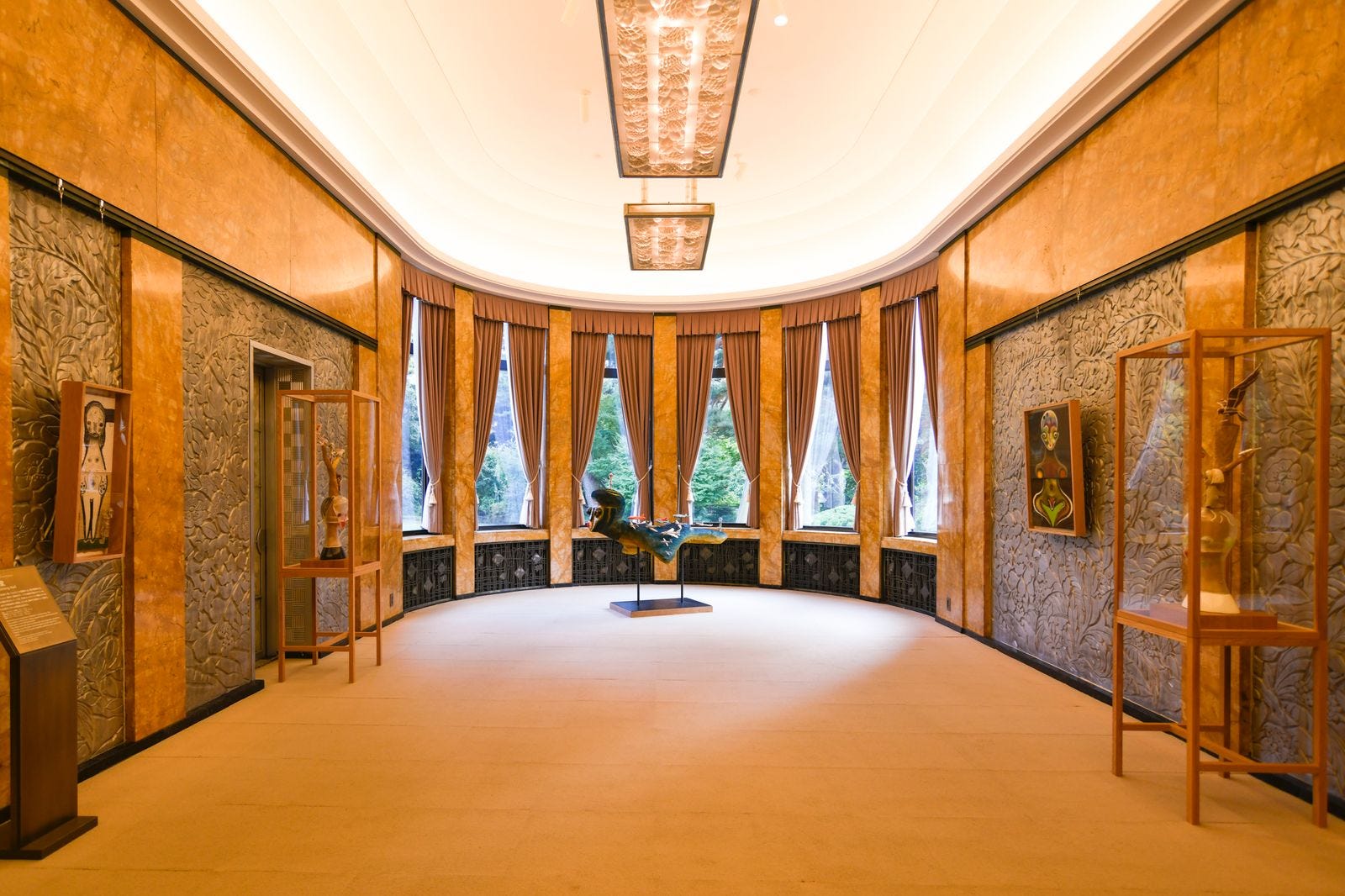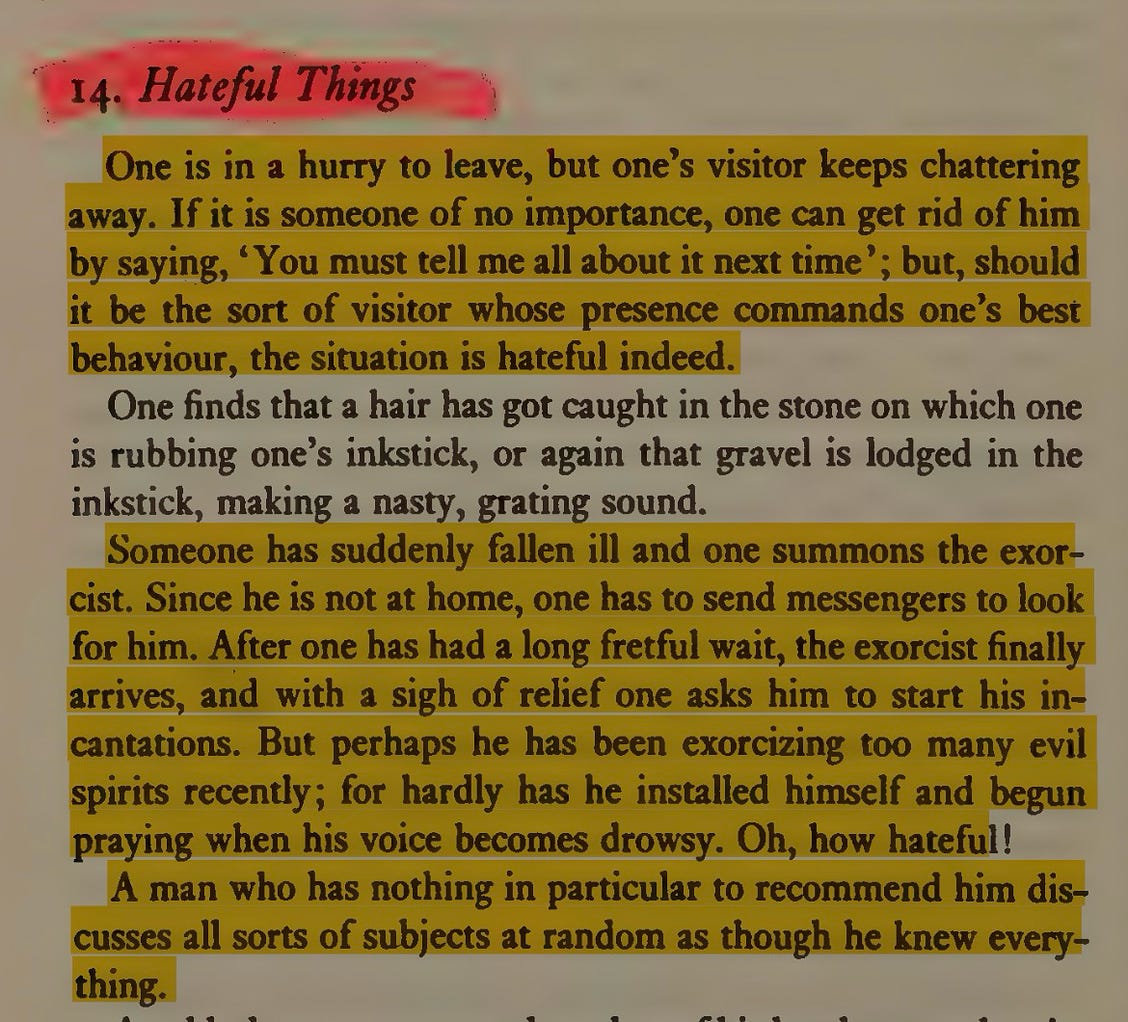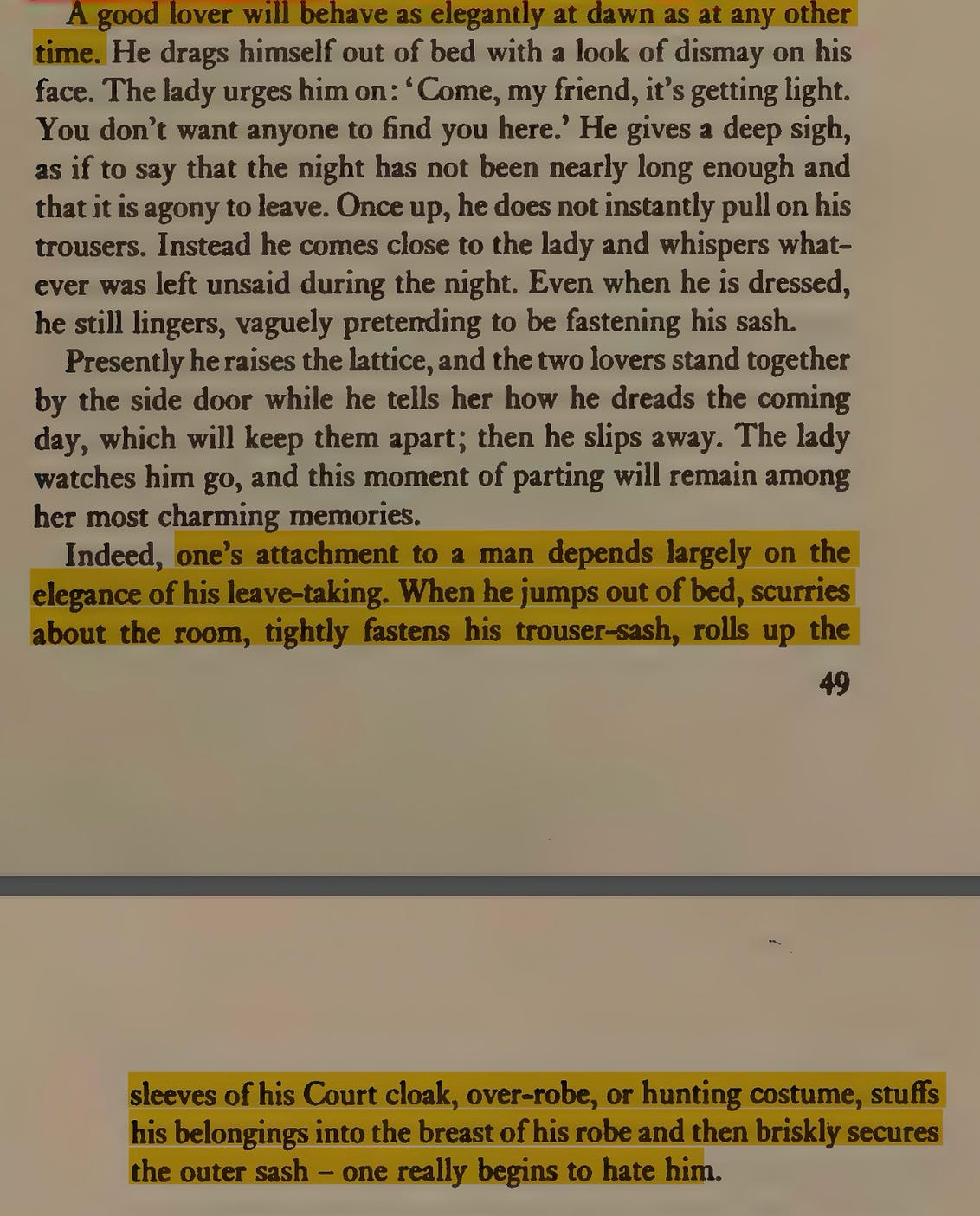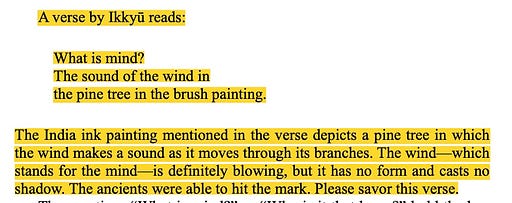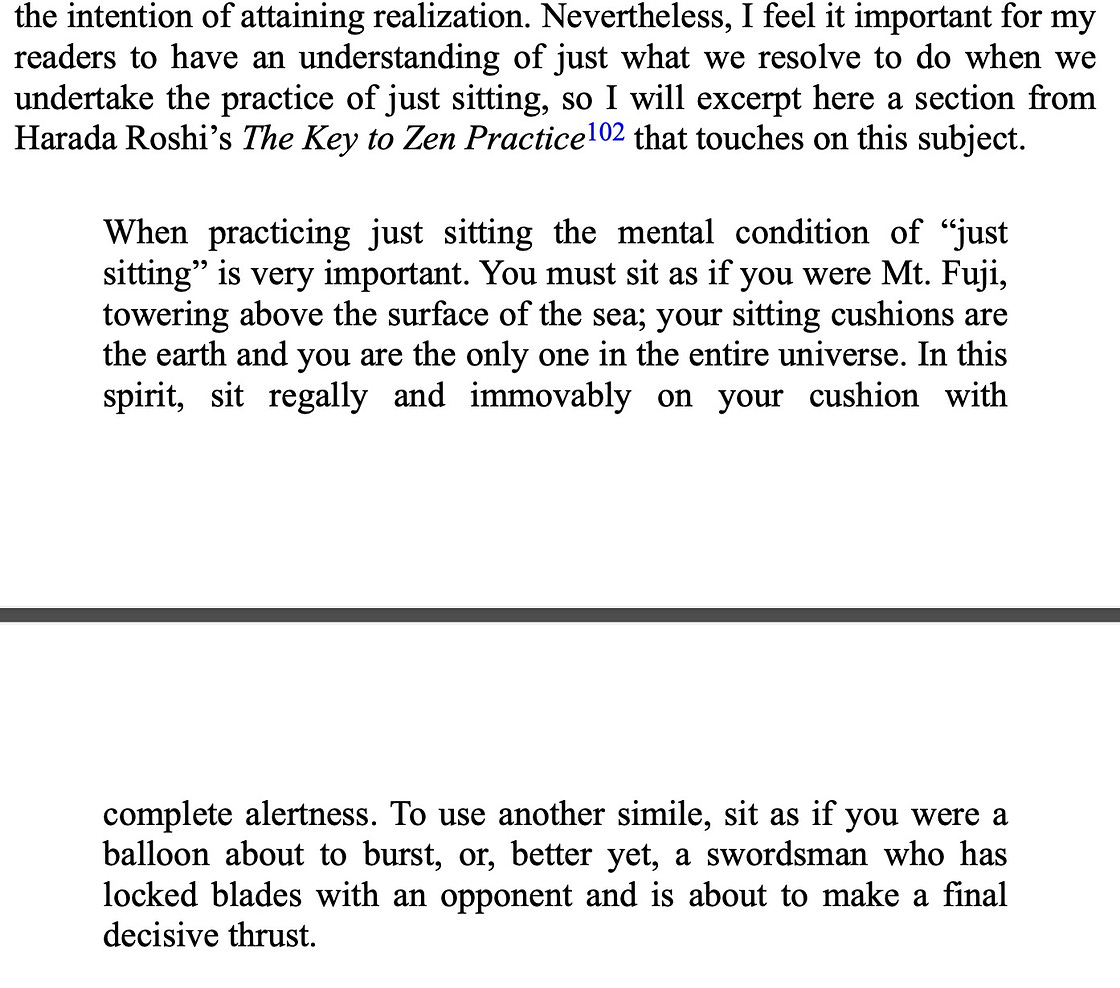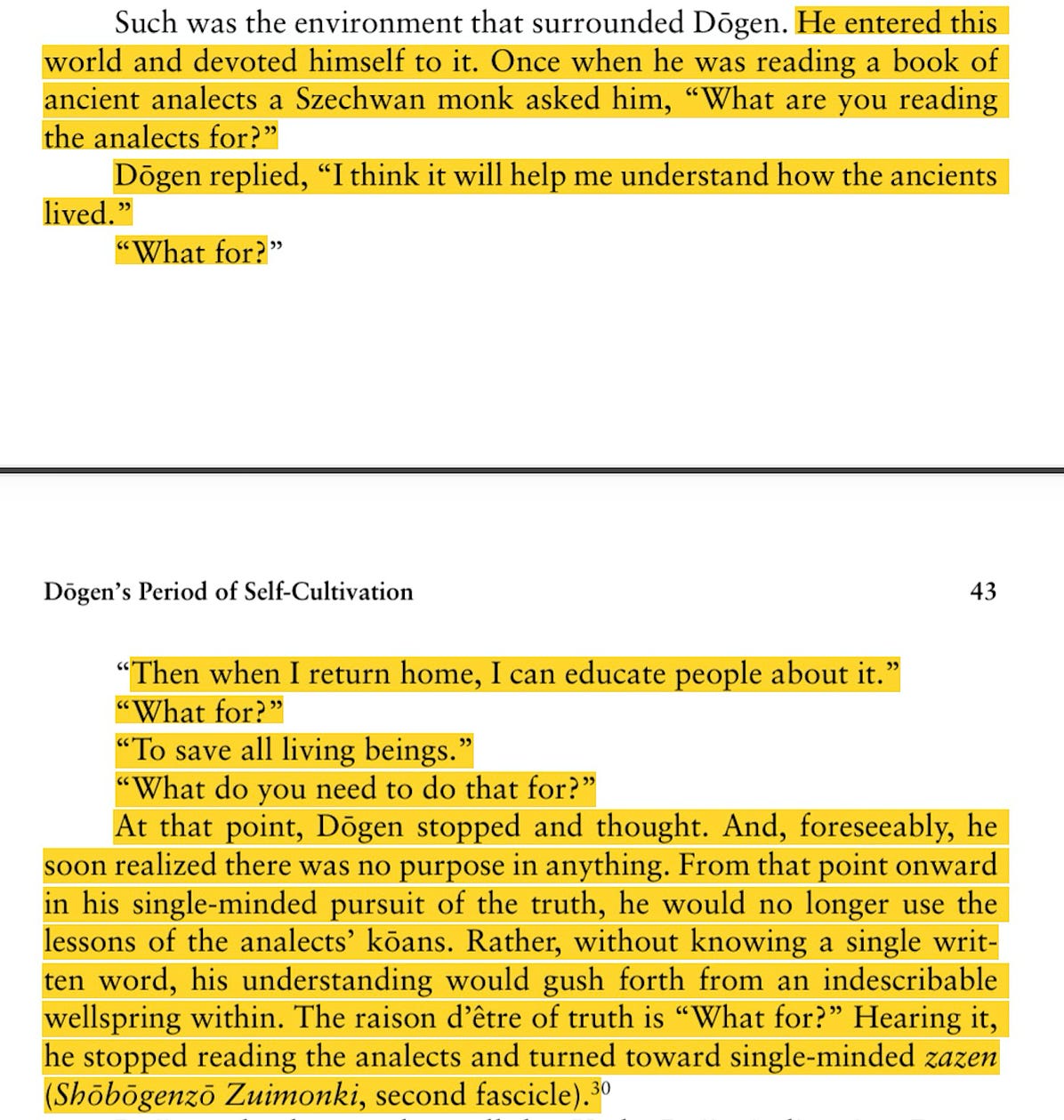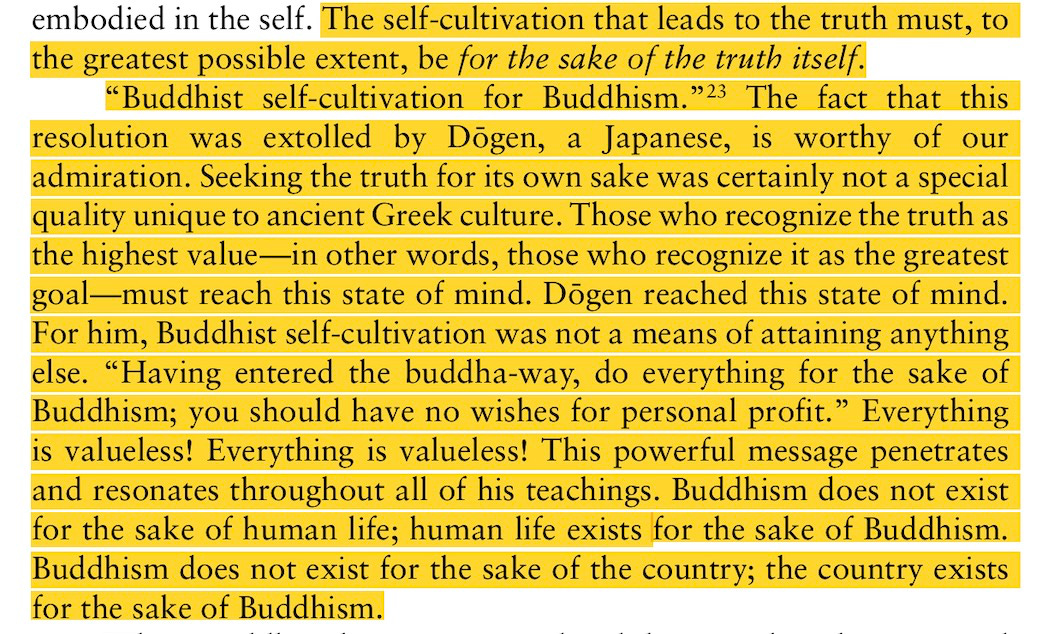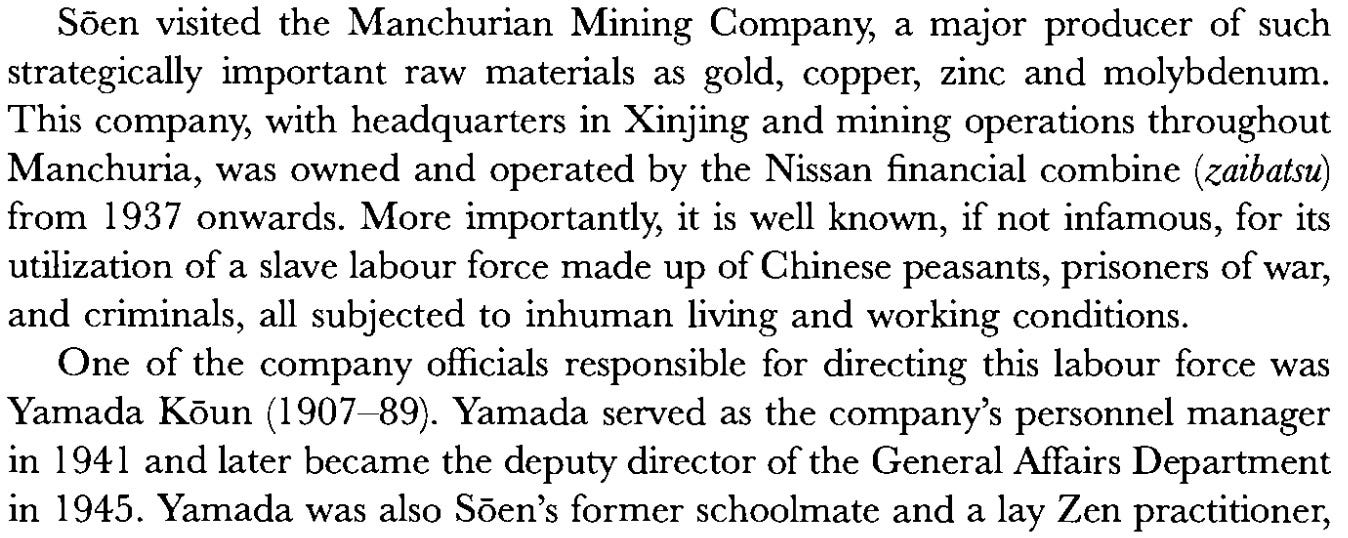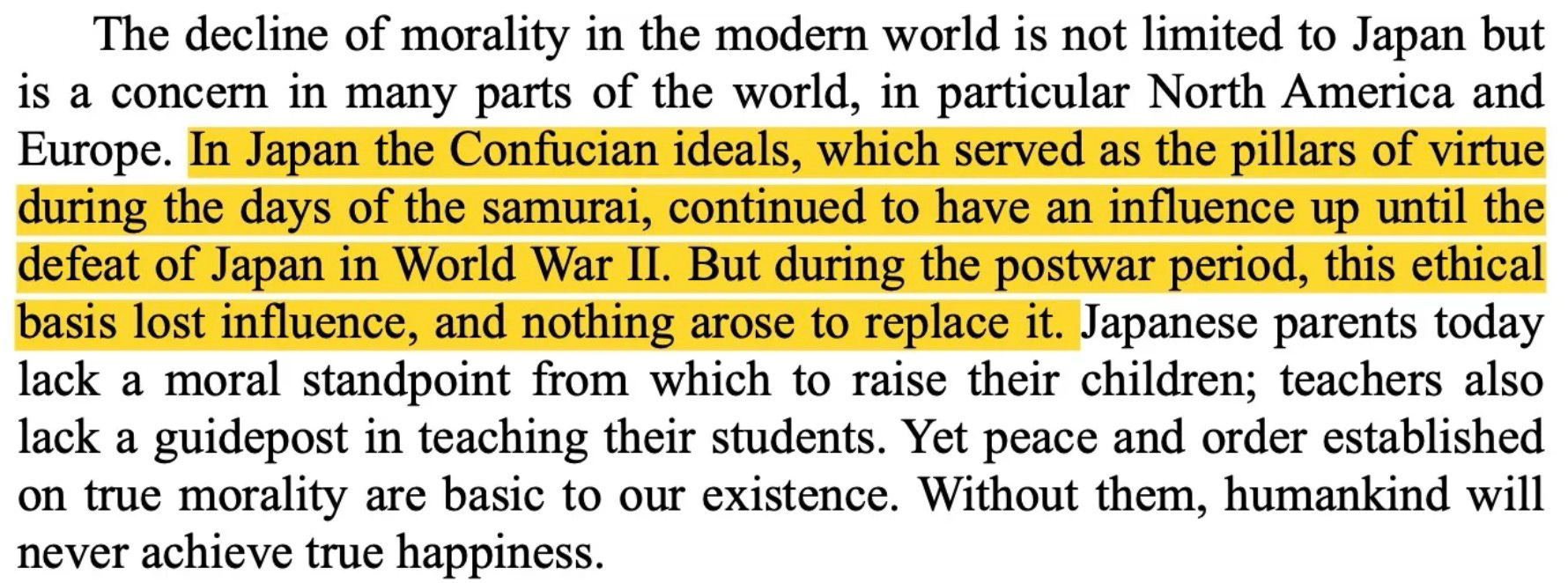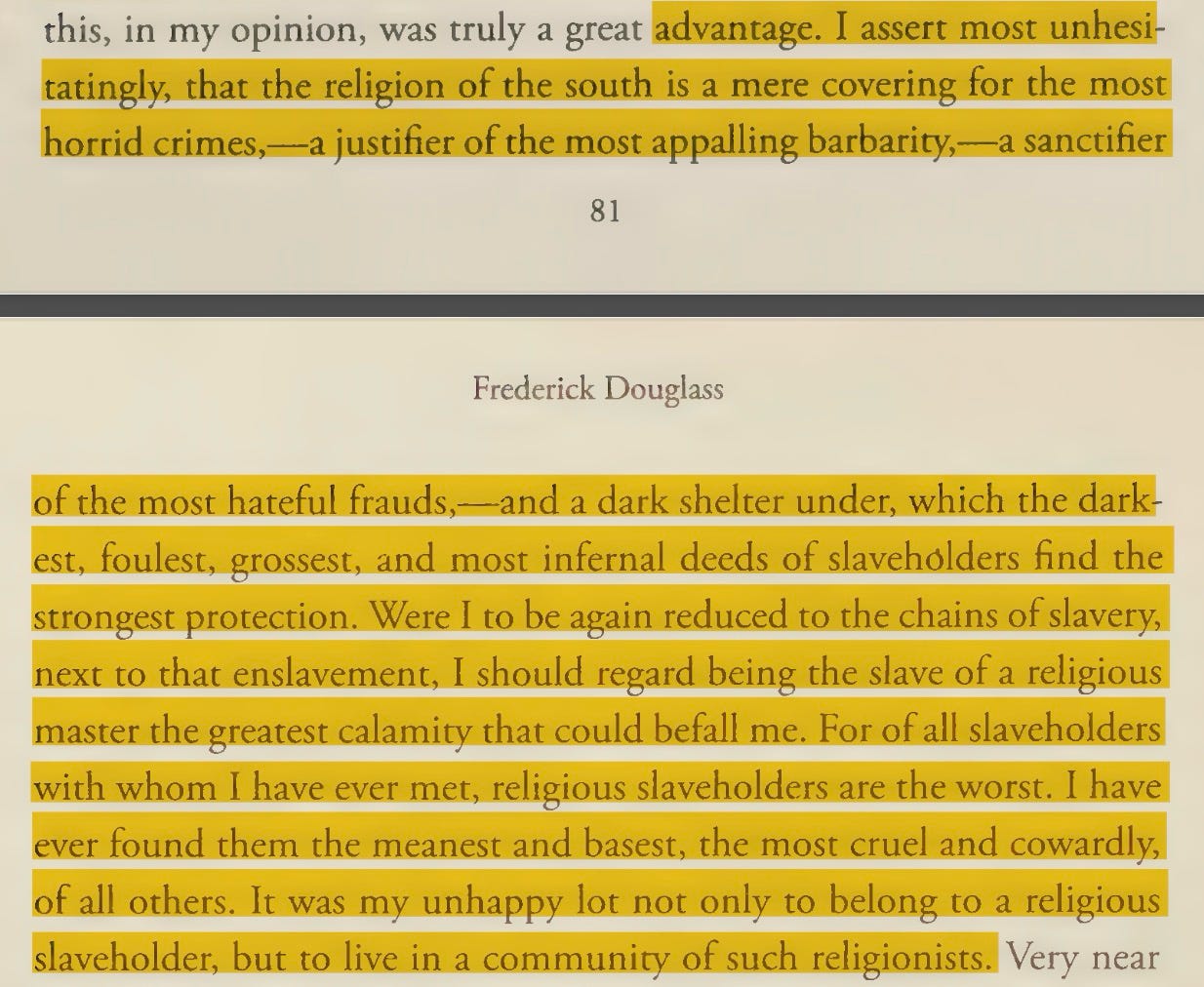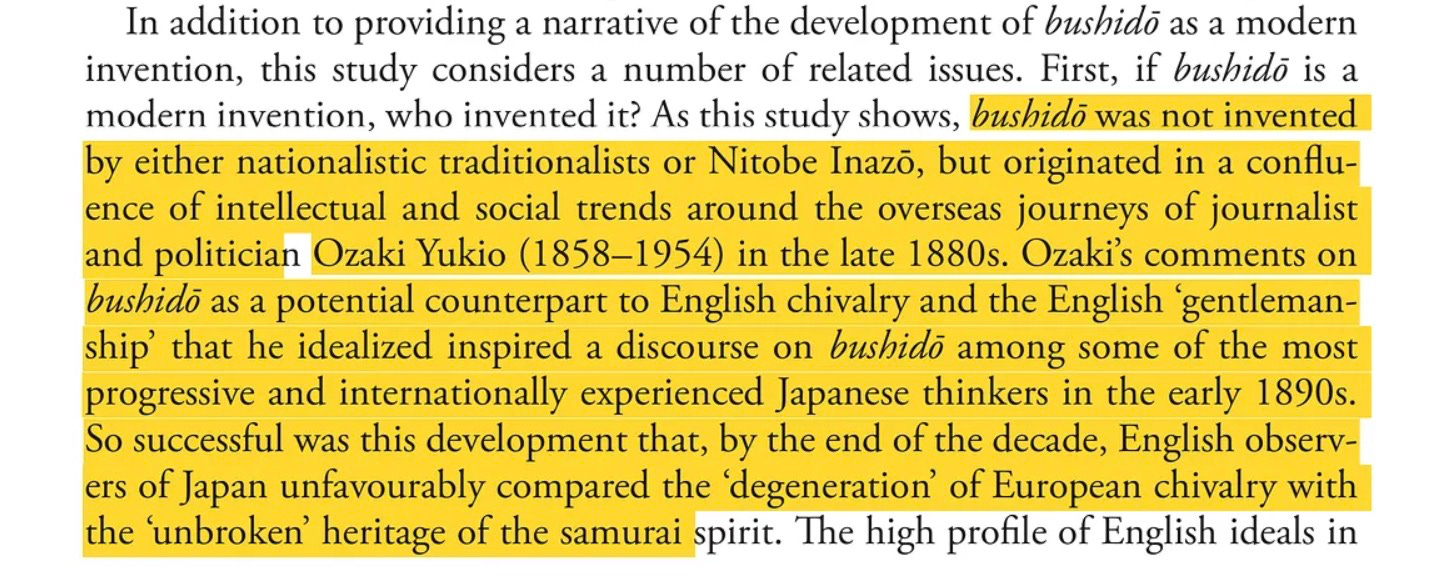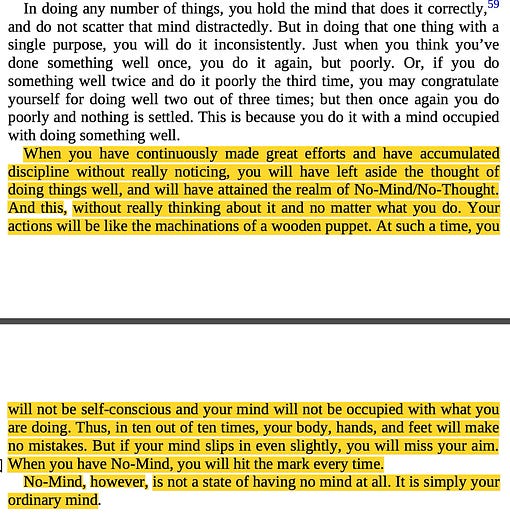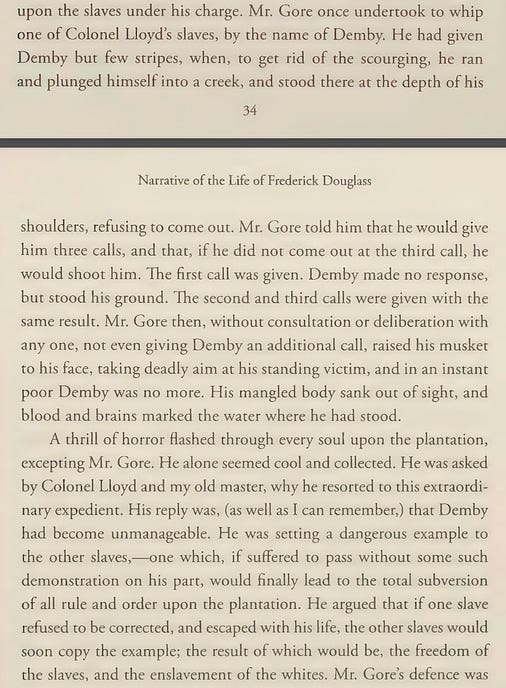Japan Notes
Zen, samurai, art deco war criminals and industrial policy. Are we headed for a JapanTalk rebrand?
I recently spent two weeks in Japan. I deeply enjoyed again being on the steep part of a regional learning curve like when I first moved to China.
What follows are notes from my travel and reading. We start off with some semis, then get into Kyoto eating, Zen Buddhism, “the way of the samurai,” and even some Shibuya-kei.
Tokyo
You know what’s fun? Visiting an East Asian country where government officials are allowed to talk to you! Emailing everyone with a go.jpaccount who reads ChinaTalk yielded up some fascinating conversations on economic security and US-Japan-China relations.
Speaking of which … METI is back in the game! It’s one thing to follow the global trend of subsidizing fabs from established players like TSMC and Micron. But they’ve also got a true moonshot in Rapidus, a government-incubated logic firm that bagged $4 billion in subsidies. They’re building a fab in the middle of nowhere in Hokkaido and have a partnership with IBM promising 2nm chips by 2027.
How did METI decide this was a good idea? I asked a Nikkei reporter who wrote a book on how semiconductors how METI decides which chip firms get subidies. His answer: “Honestly, it’s a black box. I really have no idea.” Stay tuned for a Rapidus appearance on ChinaTalk to explain themselves!
Kazuto Suzuki, Tokyo University Professor and METI advisor, hit a more wistful tone.
Jordan Schneider: It hasn't been this fun to work at METI in 40 years, right?
Kazuto Suzuki: I don’t know if Japanese bureaucrats are “excited,” because now they have a whole bunch of really hard work to do. They were happy to do that during 1960s and 70s because they saw their work translate into the growth of Japanese economy. But now, preventing economic coercion from China is going to be expensive, which is necessary, but less exciting.
The problem is that in Kumamoto, we are paying the checks to the TSMC, not a Japanese company. We are just inviting the TSMC for the better sake of the security of supply. So that's a totally different story.
I wandered into a gorgeous palace built in the 1930s by a prince who, after living in Paris for a few years, fell in love with Art Deco and decided to blend it with Japanese architecture. But who was this Prince Asaka, husband of the Meiji Emperor’s twelfth daughter? No plaque told me anything more than that he served in the Imperial Army. Enters Wikipedia: turns out he was the Japanese commander on the scene during the Nanjing Massacre, the one who issued the order to “kill all captives.” He was saved from prosecution after the war due to MacArthur’s decision to give all Imperial family members immunity. He lived until 1981, spending most of his time playing golf.
Are batting cages better for stress relief and focusing the mind than zazen meditation?
Non-alcoholic drinks, it seems, are an even bigger trend in Japan than the US — lots of subway ads and prominent supermarket placement. I even tried a non-alcoholic highball which needs more R&D love than the 0% beers.
The US Embassy in Japan has a nicer recording studio than the Pentagon. But unlike the Pentagon, they make you check your laptop at the subway station around the corner.
Said Noah Smith: “Chinese modern culture, once you get past the language barrier, is basically America. For Japan, you get France.”
Kyoto
The “top” temples have lost all their charm from the crowds, but just one tier down and you could completely lose yourself. I would pay the price of an Apple Vision Pro if it had an immersive view letting me spend all day wandering through the Diatoku-ji Temple complex. After all, Zen was Steve Jobs’s thing. Someone even wrote a whole manga about Jobs and Zen.
He reread Suzuki’s Zen Mind, Beginner’s Mind several times, and made the intersection of elements of Asian spiritualism and his business and commercial life a regular subject of the conversations he and Brilliant enjoyed throughout his life. For years, he arranged for a Zen Buddhist monk by the name of Kobun Chino Otogawa to meet with him once a week at his office to counsel him on how to balance his spiritual sense with his business goals.
Not sure I’ve ever eaten better than this week in Kyoto. To find spots, I went down the top ranked restaurants on Tabelog, Japan’s Yelp, then found reservation-making options on Google Maps, JPNEAZY, or the hotel concierge.
Kaiseki restaurants where you’re served course by course at a counter (think omakase sushi but not all sushi) allow the restaurant to control far more of your experience in a counter-seating where you’re facing the chef than what you get with table service in the West. Your focus is much less on your dining partner, and going with more than three people really doesn’t work if you’re intending to socialize at all. You’re really having dinner with the chef and their assistants, and their vibe will rub off on you. I’ll remember the jolly chubby apprentice slicing sashimi and the serious chef in his sixties wearing Sun Yat Sen–style glasses as long as will any particular bite.
But speaking of bites, pufferfish high is real and it messes you up. A minute after eating it my face was tingling, I felt euphoric, and could barely put a sentence together.
Books
Heian Literature
Sei Shonagon’s The Pillow Book, A court lady’s daily whims and life observations completed in 1002, is just gold. Let’s take excerpts from her ‘Hateful Things’ chapter, a delightful list of first world Heian court problems:
The closest thing I’ve read to it is Baldassare Castiglione’s sixteenth century The Book of the Courtier, which also gives you a peak into a lost era of court life. But The Pillow Book is better. Shonagon gives fewer fucks and doesn’t have this wistful downer quality to Castiglione, asense that his way of life was coming to a close. It’s such a head trip to read about this completely sexually liberated woman from a millennium ago. The Christian guilt blowback that writing something like this would spin up in the pre-Renaissance era takes a lot of fun out of early memoirs.
I listened to the first 200 pages of Dennis Washburn’s Tale of Genji on Audible. The translation felt dead, as though I was reading some B-rate palace drama fanfic, with the poems and descriptions doing nothing for me. I started on the Royall Tyler version, which felt almost like a Landmark Edition. Arthur Waley, a self-taught British Jew who never went to Asia whom I first came across for his Journey to the West, has a lovely (if not the most literal) translation I’m looking forward to exploring.
These books made me thankful I can at least encounter Shakespeare directly.
Zen
The best intro I found was Zen: The Authentic Gate by Yamada Koun. He did a decent job trying to explain some fundamental concepts and I appreciated how he wove in some poetry and sutras to his narrative.
Meditating is nice and relaxing, but what turned me off philosophically to Zen was this Dōgen anecdote. From Purifying Zen: Watsuji Tetsuro’s Shamon Dogen:
Another on the same theme.
That said, I really do respect Dōgen. He was a true iconoclast, in Heschel’s words to describe the Hebrew prophets, an “assaulter of the mind” whose words were a “scream in the night.”
While he may not have been trying to redeem all mankind, I don’t buy that he didn’t care about anything. If he really was so enlightened and detached from worldly concerns, why wouldn’t he just have lived as a solo recluse and disappeared from history? Instead, he spent his life beefing with all the other sects about the correct way to be Buddhist. He cared so deeply that monks got it right that he felt compelled to leave us thousands of pages of essays, poems and lectures.
Dōgen painted a gripping vision of a deeply stripped-down practice that centers zazen wall-staring and koan-contemplating. But of course, nothing stays pure. Skipping forward eight hundred years, Zen at War is a deeply damning portrayal of how Buddhism was leveraged over the arc of Imperial Japan as an ideological support to militarism. Koun, who seemed very zenned out in his book at least, had a dark WWII.
Here’s all Koun said about the war in his book:
It’s hard to take a guy who was adjacent to slave driving too seriously if all he can say about WWII in his core book of philosophy is that it led to a loss of morals in Japan.
I recently reread Frederick Douglass’ first autobiography, and some of the stuff in Zen at War reminded me of this famous excerpt.
Bushidō
Alongside some Zen reading I spent a little time with Samurai stuff. A decade ago I read Bushidō: Soul of Japan, a 1899 book written by a Japanese Christian that became an international bestseller. It felt a little fishy, as if designed to appeal to a teenager with its rough edges clearly sanded away, but it was intriguing enough to dive deeper in.
I followed it up this trip with Yamamoto Tsunetomo’s Hakagure. This is an early-eighteenth-century collection of aphorisms written by a samurai who was bummed out by the new era of peace. In Tsunetomo’s father’s era, when your daimyō died as a loyal samurai, you committed seppuku to accompany him to the afterlife. In 1662, however, the Shogun outlawed that practice — so, forbidden to commit seppuku, he became a monk and had his collection of sayings whining about how soft Japan had gotten written down by one of his friends. This book was — rightly — forgotten for 200 years before it got rediscovered in the twentieth century by some military personnel who wanted to inculcate a death wish in a new generation of soldiers. It did have this gem, though, which was the most honest thing:
The 2014 academic press book Inventing the Way of the Samurai made all this bushido stuff make sense: it’s a version of industrial era national myth building just like what was happening in the rest of the world! In fact, it’s downstream of idealized knightly virtues that gained steam in England in the 18th and 19th centuries.
I did read one book by an actual samurai. The Life-Giving Sword, written by the Shogun’s sword-teacher in 1632, has a cool premise but didn’t end up giving me all that much. That said I liked this excerpt.
Over 150 years, Japan was a society went from tolerating this…
To banning samurai carrying around swords during the Meiji Revolution and today banning guns.
Speaking of rudeness-killing, another Frederick Douglass parallel passage:
More to come, I didn’t even get to the breathtaking book Mitsui: Three Centuries of Japanese Business and its fascinating reflections on the nature of capitalism, the interaction between money and power, the interaction between right wing radicals and capital, and how political violence can warp a body politic.
